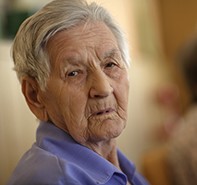Peer Reviewed
Pain assessment
Assessing pain in older people in residential aged care facilities
Abstract
The recognition of pain in older people can be complicated by the presence of dementia and misconceptions that pain is a part of ageing. Older people in residential aged care facilities should be assessed regularly for the presence of pain and managed accordingly.
Key Points
- Increasing age is associated with a higher prevalence of pain. Older people in residential aged care facilities are at risk of unrecognised and undertreated pain.
- Many reliable evidence-based pain assessment tools are available but self-report is the most reliable source of information about pain and may help in the diagnosis of the underlying cause of pain.
- Cognitive impairment makes pain assessment challenging; observational and behavioural assessment methods are useful.
- Pain has a significant adverse effect on a patient’s behaviour, physical and mental health, functioning, social relationships, self-esteem and quality of life.
- It is important to treat the underlying cause of pain and to use appropriate treatments for the type of pain.
Picture credit: Image Broker/Diomedia.com
Purchase the PDF version of this article
Already a subscriber? Login here.

